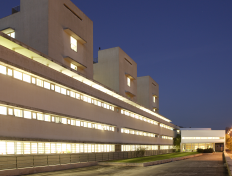Titulo Estágio
Self-supervised learning for EEG decoding in Brain-Computer Interfaces
Áreas de especialidade
Sistemas Inteligentes
Local do Estágio
CISUC-DEI
Enquadramento
A Brain-Computer Interface (BCI) is a system that provides a direct communication between the brain and a computer or external device. In short, it must interpret brain activity and translate it into commands that can be used to control devices or programs.
Different types of neuroimaging modalities can be used to implement BCIs. The most common modality is electroencephalography (EEG), since it provides a portable, inexpensive, non-invasive solution to measure brain activity with high temporal resolution. Within this neuroimaging modality, there are several approaches to generate brain signals that can be interpreted and transformed into commands by the BCIs, for example event-related potentials (the most prominent being the P300) or event-related synchronization/desynchronization (ERS/D) through motor imagery.
Recent advancements for accurately translating the EEG and properly guide a BCI involve the adoption of deep learning approaches, mainly convolutional neural networks. However, despite these advancements, neural decoders still require to be trained for each subject separately for achieving accurate predictions, mainly due to the high inter-subject variability in EEG recordings. Therefore, designing practical BCI systems that are fast to calibrate on new users is currently an open issue.
Self-supervised learning consists in training deep neural networks on unlabelled data first, capturing useful structures and relationships in the input data. Then, the pre-trained network is exploited for addressing a supervised downstream task (e.g., motor imagery classification). This approach showed promising results when processing time series other than EEG, while the adoption to EEG decoding is still in its infancy, thus requiring investigation. Specifically, this training approach could enable a reduction of calibration times in BCIs, by leveraging networks pre-trained on unlabelled data.
Objetivo
Explore and evaluate to which extent self-supervised learning approaches can reduce calibration times in BCIs. This includes:
- Identify large P300 and/or motor imagery datasets datasets to train and evaluate the models (e.g., available on OpenNeuro.org)
- Standardize multiple datasets, that is, address the differences between datasets (for example: different sampling rates, available channel locations)
- Design self-supervised learning experiments
- Train models on unlabelled data (large collection of datasets, collected at point 2), and use models on a simple downstream classification task. Train also a baseline with classic supervised learning (downstream classification task from scratch).
- Experimental analysis and reporting.
Plano de Trabalhos - Semestre 1
1. State-of-the-art review: P300 and/or motor imagery classification, conventional and deep learning approaches, self-supervised learning
2. Identification and familiarization with datasets to use
3. Definition of the methodological approach
4. Writing of the Intermediate Report
Plano de Trabalhos - Semestre 2
5. Research and development of self-supervised learning for P300 and/or motor imagery
6. Experimental analysis and reporting of the developed deep learning models
7. Writing of a scientific paper and dissertation
Condições
Access to a GPU-enabled mainframe for running the models.
Python programming language (base libraries, such as numpy, matplotlib, and pytorch for training deep neural networks).
Observações
Supervisors:
Prof. Marco Simões
Prof. Davide Borra, University of Bologna
Orientador
Marco Simões
msimoes@dei.uc.pt 📩
